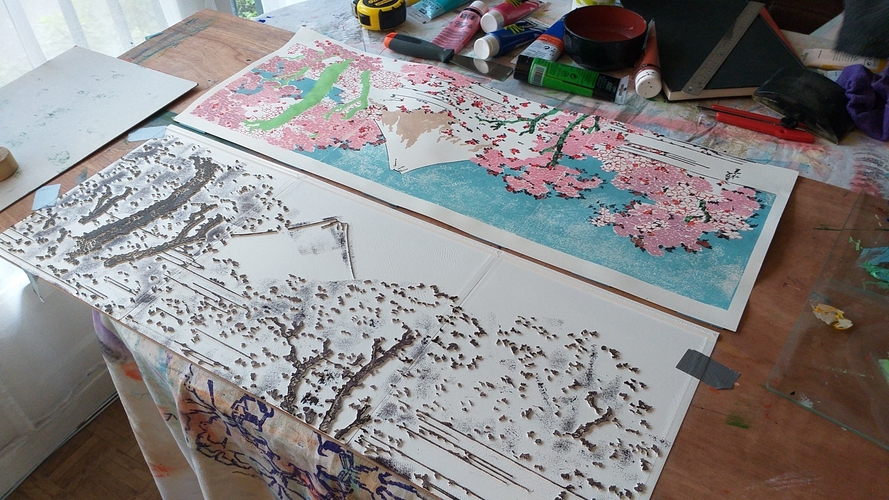
Not for beginners - Mount Fuji Behind Cherry Trees . Part 1/2
pinshape
With this 3D printed woodblock Ukiyo-e technique, you can print as many pictures as your imagination desires. Printing is a wonderfully relaxing and engaging way to spend the day, perfect for unwinding and creating something truly unique. All you need is access to someone's 3D printer and some basic art supplies to get started. The 3D files used in this technique were painstakingly created by hand, tracing lines and separating colors manually instead of relying on automated software. This labor-intensive approach yields warmer, more authentic reproductions of the original artwork, much like listening to a vinyl record versus digital music. The result is a truly beautiful and accurate version of famous Japanese works that will leave you in awe. You can print your own pictures using acrylic, watercolor, or even ink on paper or cloth - the possibilities are endless! This design features a large, extra-wide landscape print for a paper size of approximately 800mm wide x 300mm tall. I recommend using slightly larger paper to ensure a border around your artwork. The design consists of eight 'woodblocks,' each made up of three 3D printed panels (the mountain panels are only two). There are a total of 23 plates, and each panel must be taped together with gaffer tape to create one 'woodblock.' You'll have eight full-sized plates in eight different colors. Refer to my finished image or the original for color reference, but feel free to choose your own hues! Sometimes, the files will be named with a suffix like "top" and "bottom" to help you figure out which ones to tape together. I've also included instructions on which plates to use first and last, as well as numbered files showing the full order for printing with paint to avoid strong layer buildup. The plates will last for many prints, and if you use acrylic that dries quickly, you won't need to wash off the first layer of old paint. In fact, the surface will even improve after one layer has dried onto it! However, be sure to wash paint off from subsequent print sessions to prevent build-up. For 3D printing settings, I recommend using a 0.6mm nozzle and a 0.3mm layer for speed. Alternatively, you can use a regular 0.4mm nozzle with a 0.2mm layer for even better detail, but be prepared for a longer print time. Make sure to set your printer to create 100% solids instead of honeycomb inside, as this will yield better results. To avoid long stretches of print head zigzagging and vibrations, specify a high enough number for the "top/bottom infill layers" higher than the actual number of layers required. This will force the printer to use a more efficient back-and-forth movement pattern, resulting in a smoother and quieter print. After printing each plate, use a sanding block and 120+ grit sandpaper to make the top surface flat so it holds paint evenly. If you've used PLA plastic, this process won't take long since it's relatively soft. Note that the solid strip of plastic at the top doesn't need sanding - it's there for attaching your paper with masking tape. More information about this technique and future designs can be found on my website at https://bramtan.weebly.com/dev... . Enjoy creating!
With this file you will be able to print Not for beginners - Mount Fuji Behind Cherry Trees . Part 1/2 with your 3D printer. Click on the button and save the file on your computer to work, edit or customize your design. You can also find more 3D designs for printers on Not for beginners - Mount Fuji Behind Cherry Trees . Part 1/2.
